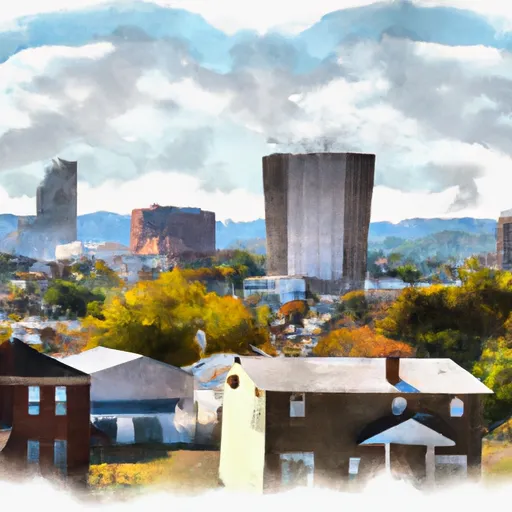-
 Snoflo Premium
Snoflo Premium
Get unlimited access to all our content
With no Ad interruptions! - Start Your Free Trial Login with existing account
Rutherford
Eden Index
Climate
7.8
•
Recreation
2.8
•
Community
0.8
•
Safeguard
4.3/10

Rutherford, Tennessee is a small town located in Gibson County, in the western part of the state. The climate in Rutherford is classified as humid subtropical, characterized by hot summers and mild winters. Average high temperatures in July, the hottest month, reach around 92°F (33°C), while average lows in January, the coldest month, dip down to about 28°F (-2°C). The area experiences moderate rainfall throughout the year.
As for hydrology constituents, Rutherford lies within the Obion River watershed. The town benefits from the presence of the Obion River, providing a source of water for various purposes, including irrigation and recreational activities.
In terms of outdoor recreation opportunities, Rutherford offers several options. The surrounding area features numerous parks and natural areas, providing ample opportunities for hiking, camping, and wildlife observation. Nearby Reelfoot Lake, a renowned natural lake formed by the New Madrid earthquakes in 1811-1812, offers excellent fishing and boating experiences. Additionally, Rutherford is conveniently located near Natchez Trace State Park, which boasts a variety of outdoor activities, including hiking, biking, horseback riding, and camping.
What is the Eden Index?
The Snoflo Eden Index serves as a comprehensive rating system for regions, evaluating their desirability through a holistic assessment of climate health, outdoor recreation opportunities, and natural disaster risk, acknowledging the profound impact of these factors on livability and well-being.
Climate Health Indicator (CHI): 7.8
Rutherford receives approximately
1339mm of rain per year,
with humidity levels near 84%
and air temperatures averaging around
15°C.
Rutherford has a plant hardyness factor of
7, meaning
plants and agriculture in this region tend to thrive during the non-winter months.
By considering the ideal temperature range, reliable water supplies, clean air, and stable seasonal rain or snowpacks, the Climate Health Indicator (CHI) underscores the significance of a healthy climate as the foundation for quality living.
A healthy climate is paramount for ensuring a high quality of life and livability in a region, fostering both physical well-being and environmental harmony. This can be characterized by ideal temperatures, reliable access to water supplies, clean air, and consistent seasonal rain or snowpacks.
Weather Forecast
Streamflow Conditions
Hatchie-Obion
Area Rivers
Hatchie-Obion
Snowpack Depths
Hatchie-Obion
Reservoir Storage Capacity
Hatchie-Obion
Groundwater Levels
Recreational Opportunity Index (ROI): 2.8
The Recreational Opportunity Index (ROI) recognizes the value of outdoor recreational options, such as parks, hiking trails, camping sites, and fishing spots, while acknowledging that climate plays a pivotal role in ensuring the comfort and consistency of these experiences.
Access to outdoor recreational opportunities, encompassing activities such as parks, hiking, camping, and fishing, is crucial for overall well-being, and the climate plays a pivotal role in enabling and enhancing these experiences, ensuring that individuals can engage in nature-based activities comfortably and consistently.
Camping Areas
| Campground | Campsites | Reservations | Toilets | Showers | Elevation |
|---|---|---|---|---|---|
| Airey Lake | None | 170 ft | |||
| Cypress Creek Landing | 17 | 103 ft | |||
| Fairley Bridge Landing | 6 | 88 ft | |||
| Flint Creek Waterpark | 156 | 246 ft | |||
| Davis Bayou - Gulf Islands National Seashore | 52 | 19 ft | |||
| Shields RV Military - Gulfport NCB | None | 26 ft | |||
| Janice Rec.Area | 7 | 116 ft | |||
| Big Biloxi Rec Area | 31 | 50 ft | |||
| Keesler AFB Military | 52 | 22 ft | |||
| Gulf Marine State Park | None | 6 ft |
Nearby Ski Areas
Catastrophe Safeguard Index (CSI):
The Catastrophe Safeguard Index (CSI) recognizes that natural disaster risk, encompassing floods, fires, hurricanes, and tornadoes, can drastically affect safety and the overall appeal of an area.
The level of natural disaster risk in a region significantly affects safety and the overall livability, with climate change amplifying these risks by potentially increasing the frequency and intensity of events like floods, fires, hurricanes, and tornadoes, thereby posing substantial challenges to community resilience and well-being.
Community Resilience Indicator (CRI): 0.8
The Community Resilience Indicator (CRI) recognizes that education, healthcare, and socioeconomics are crucial to the well-being of a region. The CRI acknowledges the profound impact of these elements on residents' overall quality of life. By evaluating educational resources, healthcare accessibility, and economic inclusivity, the index captures the essential aspects that contribute to a thriving community, fostering resident satisfaction, equity, and social cohesion.

